Fun Kid-Mom Activities Home
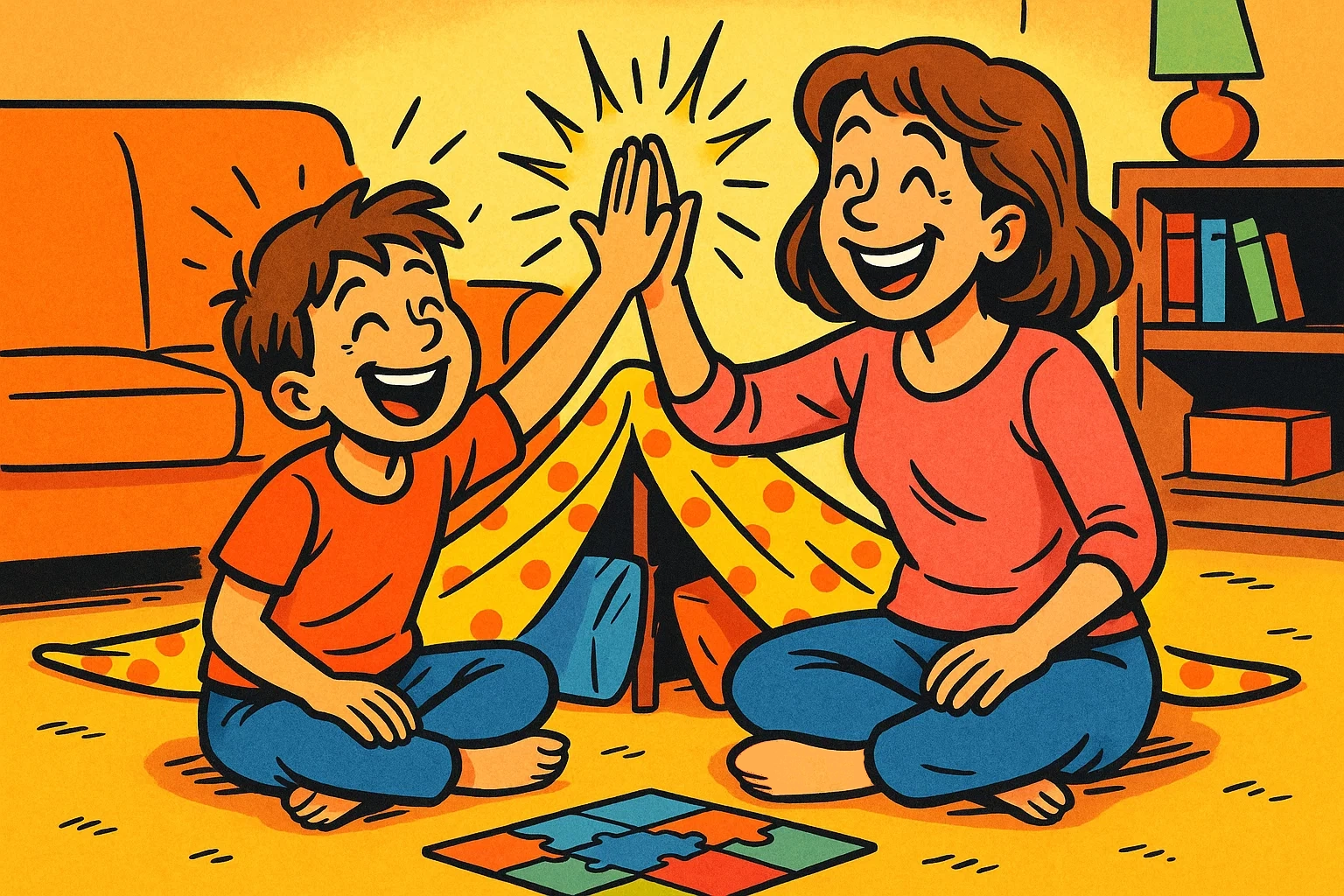
Fun Things to Do with Your Mom at Home as Kids Creating lasting memories doesn’t require expensive outings or elaborate plans. The best moments between mothers and children often happen right at home, where comfort meets creativity. Quality time spent together builds stronger relationships and creates stories you’ll both cherish for years. Whether you’re looking for rainy afternoon ideas or ways to strengthen your bond, this guide offers practical activities that work for various ages and interests. From cooking adventures to creative projects, these suggestions help families connect meaningfully while having genuine fun.
Kid-Mom Kitchen Activities
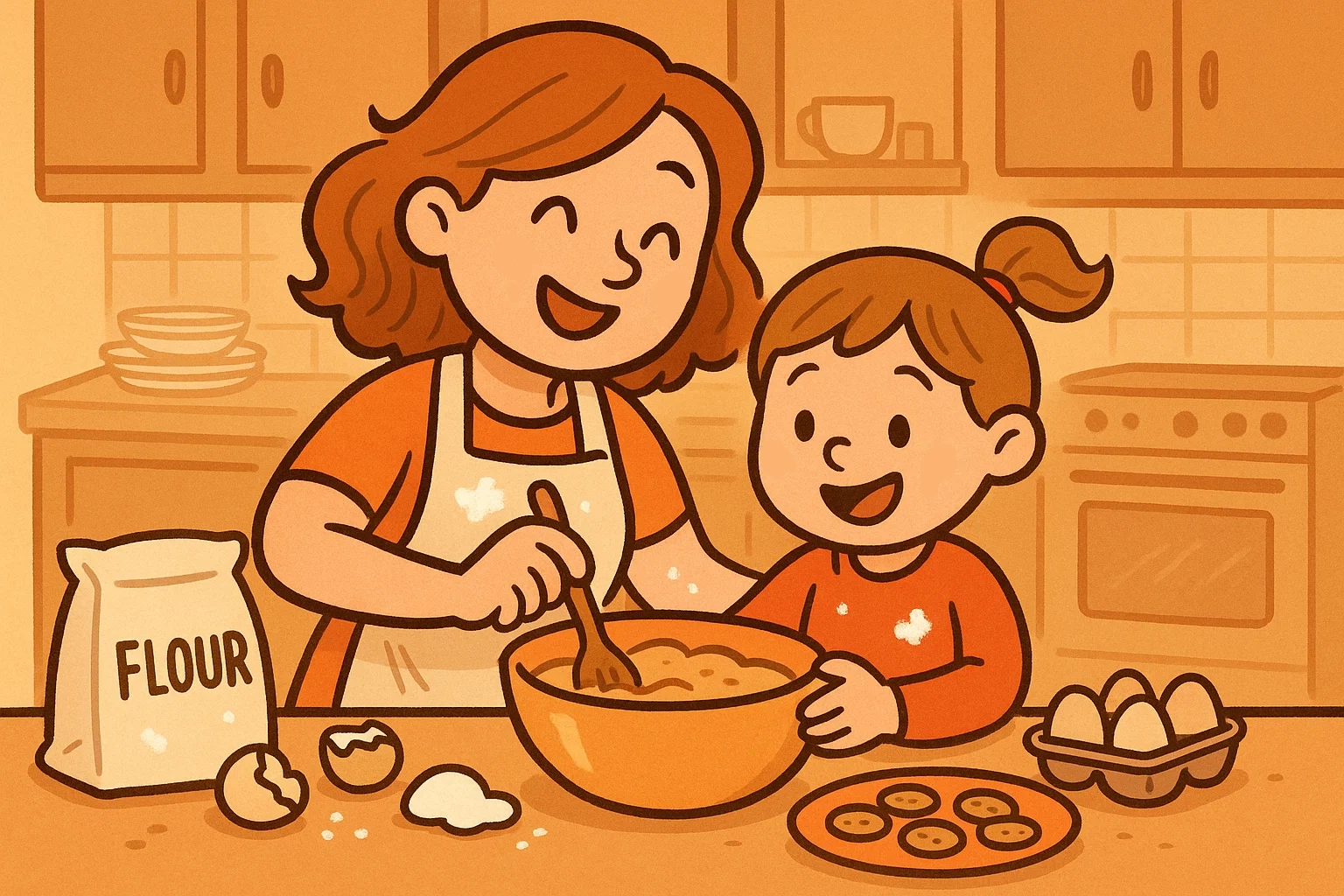
The kitchen serves as an excellent classroom for life skills while providing opportunities for meaningful conversation. Working side by side over recipes creates natural moments for sharing stories and building confidence. Some delicious and engaging ways to connect in the kitchen include:
- Cook Meal Together: Planning and preparing a full dinner from scratch.
- Bake Goods For Friends Neighbors: Making and delivering treats as thoughtful gifts.
- Invent New Recipe: Experimenting with available ingredients to create something unique.
- Theme Cooking Challenge: Setting fun parameters like “only green” ingredients or “breakfast for dinner.”
Cook Meal Together
Planning and preparing a full meal teaches organization, measurement, and teamwork. Start by selecting recipes that match your skill level—simple pasta dishes or stir-fries work well for beginners. Kids can handle age-appropriate tasks like:
- Washing vegetables.
- Measuring dry or liquid ingredients accurately.
- Stirring mixtures (away from heat).
- Setting the table. One mother shared that Tuesday evening cooking sessions with her daughter became their weekly tradition. They’d choose recipes from different countries, turning dinner preparation into geography lessons. The process matters more than perfection; burnt edges and flour-covered counters often accompany the best memories.
Bake Goods For Friends Neighbors
Baking for others adds purpose to your kitchen time. Cookies, muffins, or simple breads make thoughtful gifts that teach generosity. Package your creations in decorated bags or boxes, then deliver them together. This activity combines multiple skills:
- Following directions precisely.
- Understanding measurements and conversions.
- Practicing kindness and generosity toward neighbors.
- Developing fine motor skills through mixing and decorating. Many kids love the anticipation of seeing recipients’ reactions. You might establish a monthly baking tradition where you surprise different neighbors or friends.
Invent New Recipe
Creativity flourishes when you abandon strict recipes and experiment. Challenge each other to create something entirely new using available ingredients. Maybe you’ll discover an unusual smoothie combination or invent a unique sandwich spread. Document your experiments in a family cookbook, noting what worked and what didn’t. Even failed attempts provide learning opportunities and funny stories. This approach teaches problem-solving and encourages culinary confidence that extends beyond childhood.
Theme Cooking Challenge
Set parameters like “only green ingredients” or “breakfast for dinner” to make cooking more exciting. You might designate each person as a judge for the other’s creation, offering playful critiques. Theme challenges work particularly well when you’re stuck in a routine. They transform ordinary meal preparation into an adventure. Consider seasonal themes or challenges inspired by favorite books or movies for added engagement.
Fun Kid-Mom Games
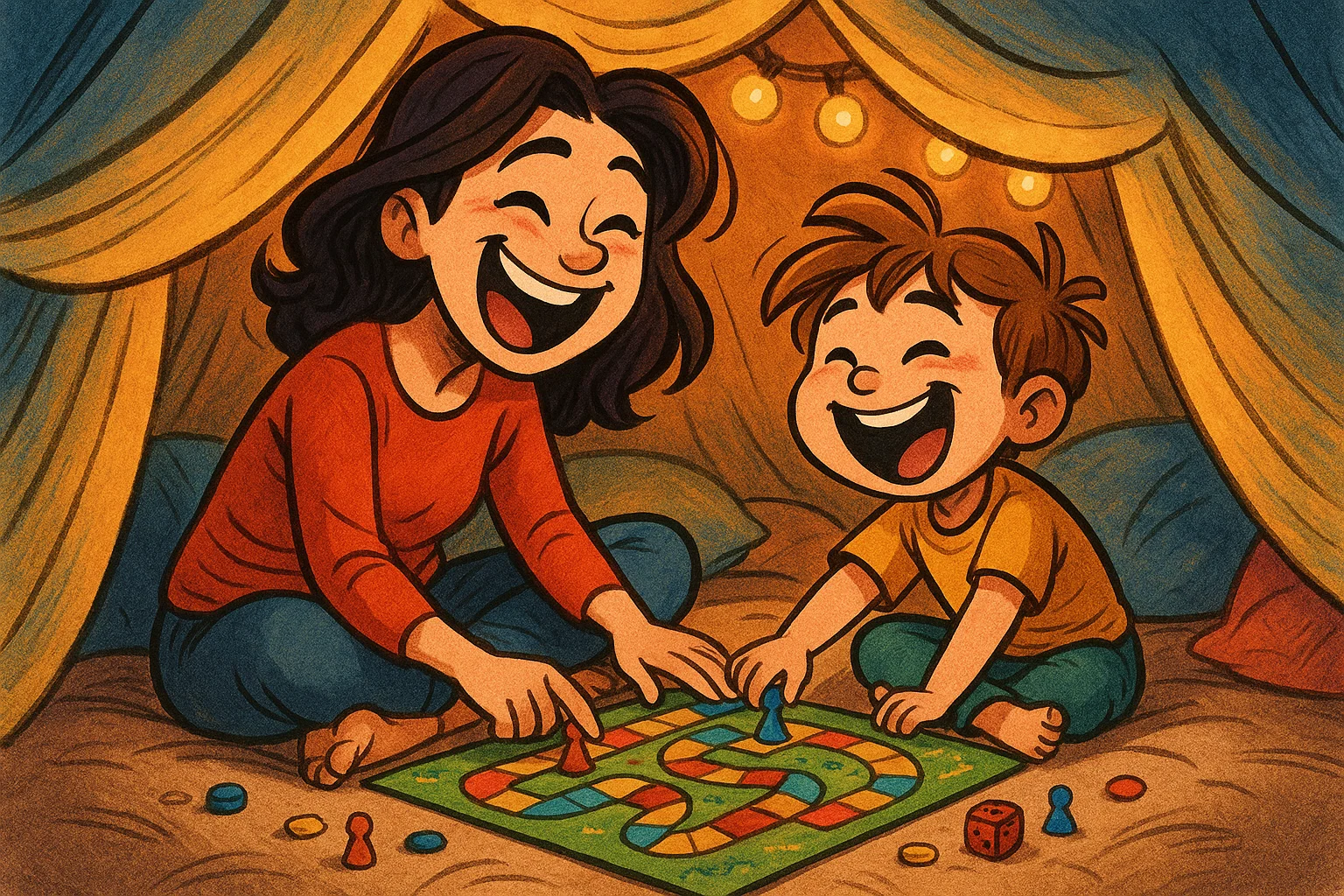
Games provide structured fun while teaching valuable skills like patience, strategy, and good sportsmanship. The right game can turn an ordinary afternoon into something special. This guide covers a range of gaming options perfect for indoor fun:
- Classic Board Games: Timeless entertainment requiring turn-taking and strategy.
- Simple Card Games: Quick, portable games improving memory and quick thinking.
- Modern Party Games: Guaranteed laughter with titles like Exploding Kittens or MadLibs.
- Impromptu Contests: Zero-cost challenges like drawing or storytelling contests.
- Playful Things: Unstructured fun like building blanket forts and pillow fights.
Classic Board Games
Traditional board games like Monopoly, Scrabble, or checkers offer timeless entertainment. These games teach turn-taking, strategic thinking, and graceful winning or losing. Don’t rush through them—the conversations that happen during gameplay often matter most. Consider rotating through different board games monthly to maintain interest. Many families keep scorecards across multiple sessions, creating friendly ongoing competitions. The familiar ritual of setting up a favorite game can be comforting during stressful times.
Simple Card Games
A standard deck of cards provides endless entertainment. Teach classics like Go Fish, Crazy Eights, or War for younger children. Older kids might enjoy Rummy, Hearts, or Spades. Card games develop memory, probability understanding, and quick thinking. They’re also perfectly portable for situations where you’re confined to one room or dealing with illness. Many adults recall card game marathons with their mothers as cherished childhood memories.
Exploding Kittens Fibbage MadLibs
Modern games bring fresh energy to family time. Exploding Kittens offers quick rounds with silly illustrations. Fibbage challenges players to create convincing lies. MadLibs generates guaranteed laughter through collaborative storytelling. These games typically accommodate different age ranges and require minimal setup. Their unpredictable nature keeps everyone engaged. The humor they generate often leads to inside jokes that strengthen family bonds.
Impromptu DrawIt Contest
Challenge each other to sketch specific objects, animals, or concepts within time limits. You don’t need artistic talent—awkward drawings often produce the most laughter. Take turns being the judge or vote on favorites. This activity costs nothing and can happen anywhere with paper and pencils. It encourages creative thinking and shows kids that perfection isn’t required for enjoyment. Save particularly funny drawings in a folder to revisit during future game sessions.
Playful Things
Beyond structured games, embrace spontaneous play. Build blanket forts, have pillow fights, or create obstacle courses using furniture. These playful things remind both participants that silliness has value. Unstructured play allows personality to shine without rules or competition. It’s during these moments that natural conversations often emerge. Don’t underestimate the bonding power of shared laughter over something completely ridiculous.
Tech-Based Kid-Mom Activities
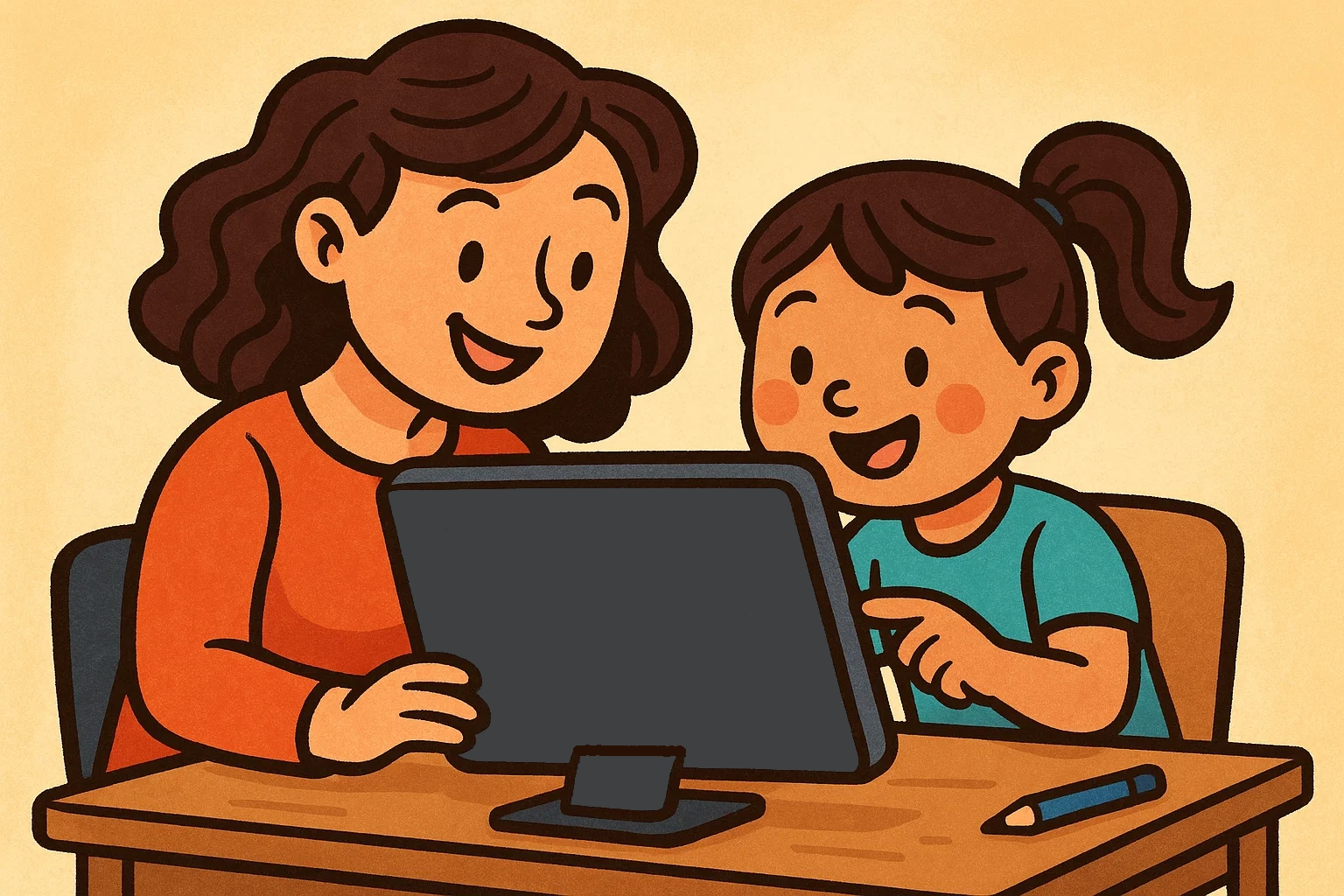
Technology, when used intentionally, can enhance rather than replace quality time. These activities leverage digital tools for collaborative entertainment and learning.
Wiki Game Challenge
Start at a random Wikipedia article and race to reach a target article using only links within pages. This game teaches research skills, improves reading comprehension, and expands general knowledge. The unpredictable paths you’ll take through Wikipedia often lead to fascinating discoveries. You might start at “pizza” and end up learning about medieval trade routes. Each round typically lasts 10-15 minutes, making it perfect for shorter attention spans.
Favorite Video Games
Playing video games together breaks down generational barriers. Whether you’re exploring Minecraft worlds, solving puzzles in Portal, or competing in Mario Kart, shared gaming creates common ground. Many video games now emphasize cooperation over competition. Look for titles designed for multiple players working toward shared goals. These experiences teach communication, patience, and celebrating collective achievements rather than individual victories.
Collaborative Minecraft Building
Minecraft’s creative mode offers unlimited possibilities for building together. Plan and construct elaborate structures, recreate real places, or design fantasy worlds. The process encourages spatial reasoning, planning, and compromise. Set specific projects like “build our dream house” or “create an amusement park.” Working toward shared goals in Minecraft mirrors real-world collaboration skills. Many families maintain servers where their creations become digital family albums.
Virtual Playdate Setup
Help coordinate online hangouts with friends or distant relatives. Learning to navigate video calls and online platforms builds digital literacy. You can facilitate virtual game nights, show-and-tell sessions, or collaborative art projects. This activity became particularly valuable during periods when in-person gatherings weren’t possible. It teaches kids how technology can maintain relationships across distances. Your involvement ensures safety while modeling healthy online interaction.
Video Editing Session
Collect existing home videos or film new footage, then edit together a short movie. Free programs like iMovie or Windows Video Editor provide accessible entry points. Add music, transitions, and captions to create polished results. This activity combines storytelling, technology, and performance. Finished videos become treasured keepsakes. One family creates annual “year in review” videos that they watch together each New Year’s Eve.
Pampering Home Activities
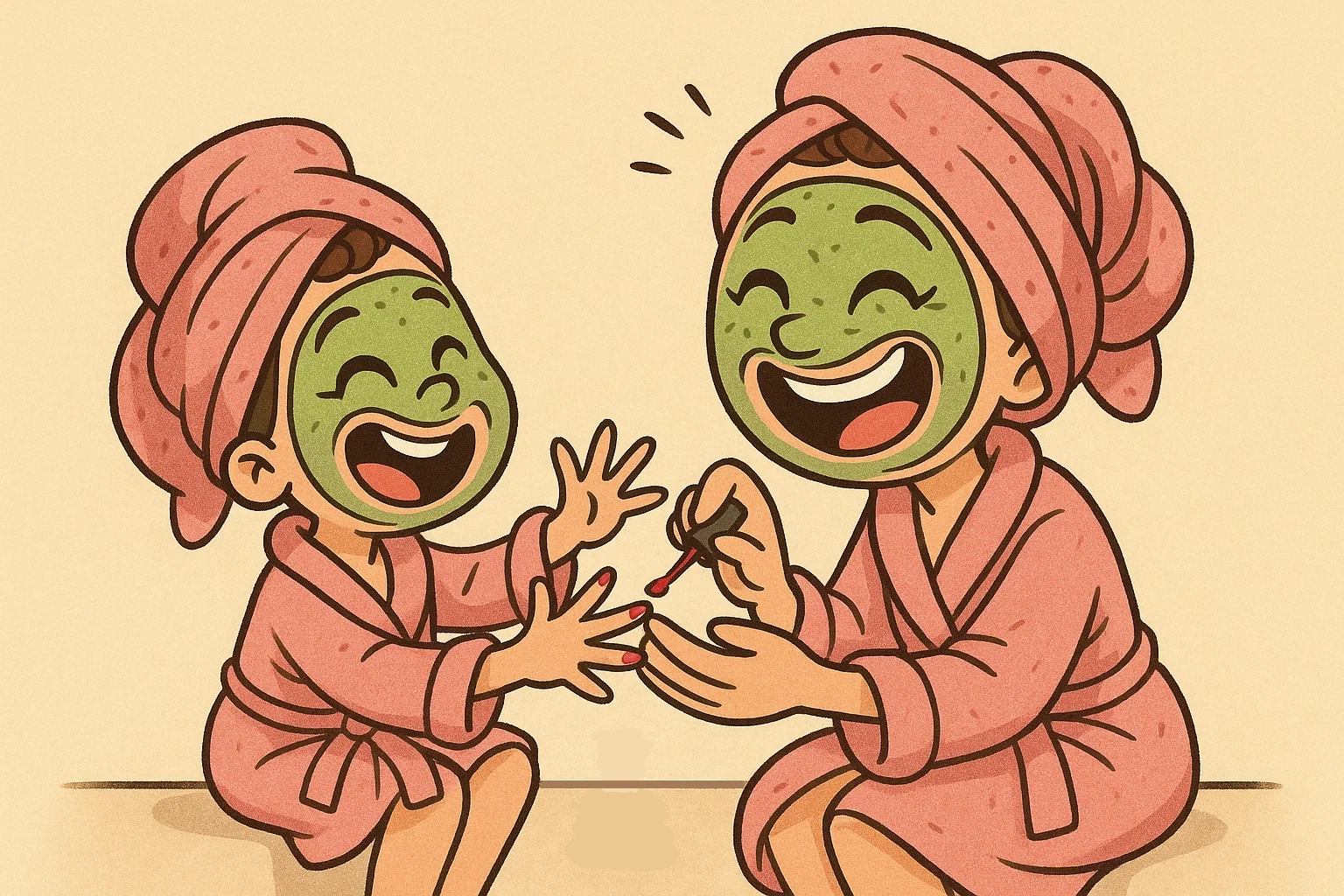
Self-care activities teach children that taking care of themselves matters. These experiences promote relaxation while creating spa-like atmosphere at home.
DIY Home Spa Day
Transform your bathroom into a spa with dim lighting, calming music, and homemade treatments. The essential elements for a relaxing home spa experience include:
- Dim lighting or candles (with adult supervision).
- Calming background music.
- Face masks made from kitchen ingredients (oatmeal, honey).
- Warm, damp towels for soothing the face.
- Gentle foot or hand massages. This activity introduces self-care concepts in practical ways. It demonstrates that relaxation doesn’t require expensive products or appointments. Many mothers report that spa days lead to meaningful conversations as everyone relaxes.
At-Home Manicure Pedicure
Caring for nails together teaches hygiene and personal grooming. Experiment with colors, designs, or nail art. The slow, careful process naturally facilitates conversation. Even simple nail care becomes special when done together. You don’t need professional supplies—basic polish and files suffice. The physical closeness and focused attention make this activity particularly bonding.
Creative Makeovers
Experiment with hairstyles, makeup, or fashion combinations without judgment. Take turns styling each other, trying looks you’d never wear outside. Photograph the results for laughs. This activity works best when approached playfully rather than seriously. It builds confidence in personal expression and shows that appearances can be experimental and fun. The sillier, the better—purple eyeshadow and mismatched patterns encouraged.
DIY Lotions Lip Balms
Create simple beauty products using recipes found online. Coconut oil-based lotions, beeswax lip balms, and sugar scrubs are straightforward to make. Package finished products in small containers for personal use or gifts. Making your own products teaches basic chemistry and ingredient awareness. Kids love the science experiment aspect while learning practical skills. The products you create together serve as tangible reminders of your shared effort.
Full Service Salon Day
Combine multiple pampering activities into an extended spa experience. Rotate through hair styling, nail care, facials, and relaxation. Create appointment cards and take turns being the service provider. Role-playing adds extra enjoyment to the experience. Kids love pretending to run their own salon. This extended version works well for special occasions or when you have several hours available.
Active Home Activities
Physical movement benefits both body and mood. These activities get everyone moving without requiring special equipment or outdoor space.
Just Dance Workout
Video game dance routines provide energetic entertainment. Games like Just Dance track movements and score performance, adding competitive elements. The music variety means everyone finds songs they enjoy. Dancing together removes self-consciousness through shared participation. It’s cardiovascular exercise disguised as fun. Many families incorporate Just Dance sessions into regular routines, making fitness a natural part of life rather than a chore.
Beginner Yoga Session
Follow online yoga videos designed for families or beginners. Focus on simple poses and breathing exercises. The calming nature of yoga provides counterbalance to busier activities. Yoga teaches body awareness, flexibility, and mindfulness. Starting young establishes healthy habits that can continue throughout life. The quiet focus required often leads to peaceful moments that contrast nicely with more energetic pursuits.
Indoor Active Games Practice
Set up mini versions of outdoor sports inside. These improvisational games adapt well to limited space:
- Balloon volleyball over a rope or chair.
- Hallway bowling using plastic bottles as pins.
- Sock basketball tossed into laundry baskets or bins.
- Indoor golf using a soft ball and a cup on its side. These improvisations show kids how creativity overcomes limitations. You’ll likely invent entirely new games through experimentation. The physical activity releases energy while the novelty maintains engagement.
Simple Bean Bag Toss Games
Create targets using tape, boxes, or household items. Vary distances and scoring systems to maintain challenge. Bean bags (or rolled socks) work for tossing without breaking anything. This activity develops hand-eye coordination and basic arithmetic through scorekeeping. It’s easily adapted for different skill levels by adjusting distances or target sizes. The low-stakes nature keeps competition friendly.
Active Things
Incorporate movement into everyday activities. Race to complete chores, have dance parties during dish washing, or do jumping jacks during commercial breaks. These active things integrate fitness naturally into daily life. Small bursts of activity throughout the day accumulate into significant movement. This approach teaches that exercise doesn’t require dedicated workout time. Finding movement opportunities becomes a fun challenge rather than an obligation.
Communication And Bonding
Strengthening emotional connections requires intentional conversation and shared experiences. These activities facilitate deeper understanding between mothers and children.
Cuddle Little Talk Deck
Conversation starter cards or printable question decks guide meaningful discussions. While cuddling or sitting together, take turns drawing cards and answering honestly. Questions range from silly preferences to deeper values. This structured approach helps when conversation doesn’t flow naturally. It introduces topics that might not arise organically. Many families find that one good question leads to extended discussions far beyond the original prompt.
Write Mom-Kid Journal
Share a notebook where you exchange written messages. Write back and forth about daily experiences, feelings, or random thoughts. This creates a private communication channel separate from verbal conversations. Journals preserve memories while providing safe space for topics that feel too difficult to discuss face-to-face. Rereading past entries shows growth and reminds you of forgotten moments. Some families continue these journals for years, creating invaluable records.
Blackout Poetry Creation
Take pages from old books or newspapers and create poems by blacking out most words, leaving only selected phrases visible. The constraint sparks creativity while making poetry less intimidating. This activity produces artwork suitable for display while exploring language in unusual ways. Each person’s selections reveal their current thoughts and interests. Comparing different poems from the same source material shows how perspective varies.
Discuss Kids Wants From Moms
Create safe space for children to express what they need or want from you. Listen without defensiveness, asking clarifying questions rather than explaining or justifying. This might feel vulnerable but provides invaluable insight. Regular check-ins about expectations and feelings prevent resentment buildup. Kids love feeling heard and seeing their feedback create change. This practice models healthy communication that serves them in all future relationships.
Thoughtful Activities
Beyond specific exercises, practice present attention. Put phones away, make eye contact, and respond to what is actually being said rather than planning your next comment. These thoughtful activities demonstrate that you value the relationship. Presence matters more than elaborate activities. Sometimes the most bonding experiences happen during simple moments when you’re fully engaged. Quality attention is the foundation beneath all other connection-building efforts.
Fun Performance And Show Activities
Performance activities build confidence while creating entertaining experiences. These don’t require talent—enthusiasm and willingness matter most.
Impromptu Fashion Show
Raid closets for outfit combinations, then stage a runway show. Narrate each look dramatically, complete with made-up designer names and inspiration stories. Vote on categories like “most creative” or “best use of accessories.” This activity encourages self-expression without judgment. The theatrical presentation adds extra entertainment value. Kids love seeing their mothers participate fully in silliness, which demonstrates that adults can still play.
Lip Sync Battle Dance Off
Choose favorite songs and perform without actually singing. Compete for best performance based on enthusiasm, choreography, and facial expressions. Record performances for later viewing. Lip sync battles remove vocal pressure while maintaining performance excitement. The exaggerated expressions and movements typically generate substantial laughter. Many families return to their favorite recorded performances during tough times, using laughter as medicine.
Film Video Together
Write, film, and star in short videos. Create comedy sketches, music videos, stop-motion animations, or dramatic scenes. The planning process proves as entertaining as filming itself. This activity combines storytelling, technology, and performance. Finished videos become time capsules showing growth and interests. Sharing appropriate videos with extended family spreads joy beyond your immediate household.
Creative Photoshoot Session
Set up backgrounds using blankets or interesting walls, then photograph each other in various poses and themes. Experiment with lighting, angles, and expressions. Edit photos together afterward using free apps. Photography teaches composition, lighting, and perspective while producing shareable results. The focused attention of being photographed makes subjects feel valued. Building a collection of quality photos together creates visual documentation of your relationship.
Themed Activity Day
Choose a theme—decades, countries, colors, favorite books—and build an entire day around it. Coordinate meals, activities, music, and even clothing. The commitment to the theme makes ordinary activities feel special. Themed days require planning, which becomes part of the fun. You might spend weeks preparing for “1980s day” or “Harry Potter day.” The anticipation builds excitement, and the execution creates distinctive memories that stand apart from regular days.
Building Lasting Connections Through Home Activities
The specific activities matter less than the intention behind them. Quality time happens when you’re fully present, enthusiastic, and open to wherever the experience leads. Kids love these moments not because of what you’re doing but because they feel prioritized.
Consistency matters more than perfection. Regular smaller activities often strengthen bonds more effectively than occasional elaborate events. Weekly traditions, even simple ones, give children something to anticipate and remember.
Don’t worry about documentation overload—sometimes the best experiences happen when phones stay put away. A few key photos preserve memories without interrupting experiences. Trust that the feelings created will last longer than any photograph.
Making the Most of Your Time Together
Start with activities that match current interests and energy levels. A restless child might need physical activity before settling into quieter pursuits. A tired mother might appreciate low-key options that still facilitate connection.
Flexibility helps maintain enjoyment. If a planned activity isn’t working, switch to something else without guilt. The goal is connection, not completion. Some of the best memories emerge from abandoned plans and spontaneous alternatives.
Involve kids in planning. When children help choose activities, they invest more fully in participation. This also teaches decision-making and consideration of others’ preferences. Take turns selecting what you’ll do together.
